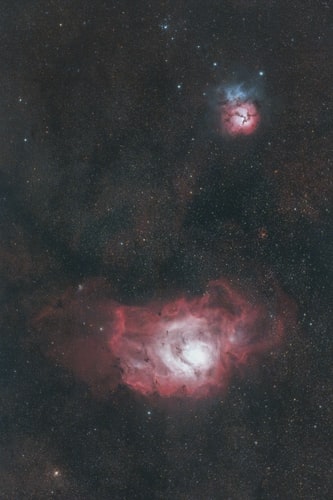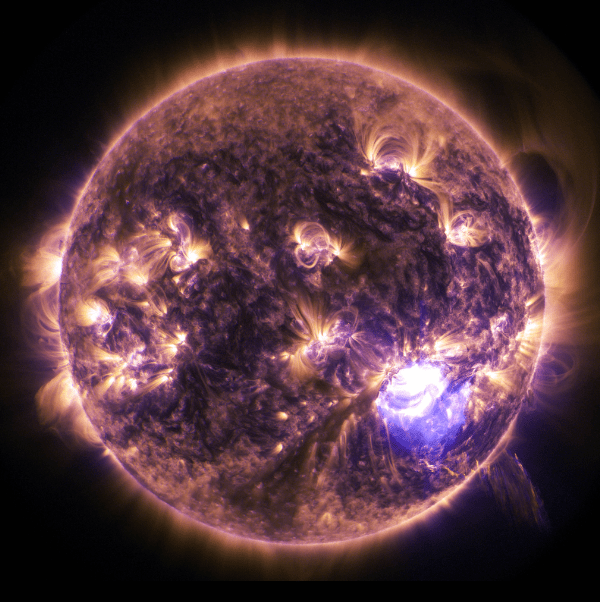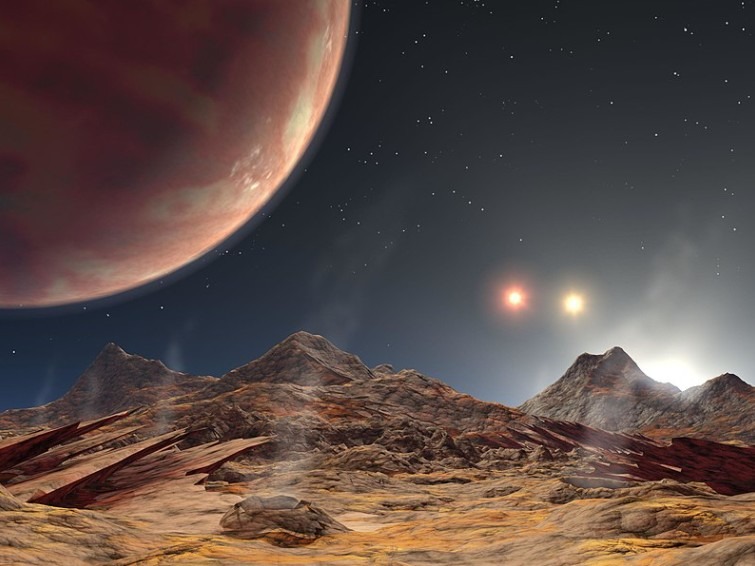Rogue Planets: Exploring Free-Floating Worlds Without a Star

Rogue planets, which drift through the cosmos unanchored by a star, might actually outnumber the stars in our galaxy. These elusive worlds, either formed through unique mechanisms or ejected from their original planetary systems, challenge our understanding of planetary formation and habitability. Their existence raises intriguing questions about the potential for life in their cold environments or on their moons. What insights might we gain about these free-floating entities, and how could they reshape our perspective on life beyond our solar system?
Overview of Rogue Planets
Rogue planets are intriguing celestial bodies that drift through space without orbiting any star. Estimates suggest there could be trillions of these free-floating worlds in our galaxy, potentially outnumbering stars by a ratio of 20 to 1. While many rogue planets are similar in size to gas giants like Jupiter, many identified ones are larger than Earth and may have unique environments.
Understanding rogue planets is crucial for grasping the diversity of planetary systems. Advances in technology, particularly with the upcoming Nancy Grace Roman Space Telescope, promise to significantly enhance our knowledge. This telescope is expected to identify up to 400 Earth-mass rogue planets, far exceeding earlier estimates of around 50.
Gravitational microlensing is the primary detection method for these elusive planets. This technique involves observing the bending of light around a rogue planet when it aligns with background objects, allowing astronomers to identify low-mass free-floating worlds that would otherwise remain unnoticed. Studying rogue planets not only provides insights into their characteristics but also poses intriguing questions about the potential for life in environments far from traditional star systems.
Formation and Ejection Mechanisms
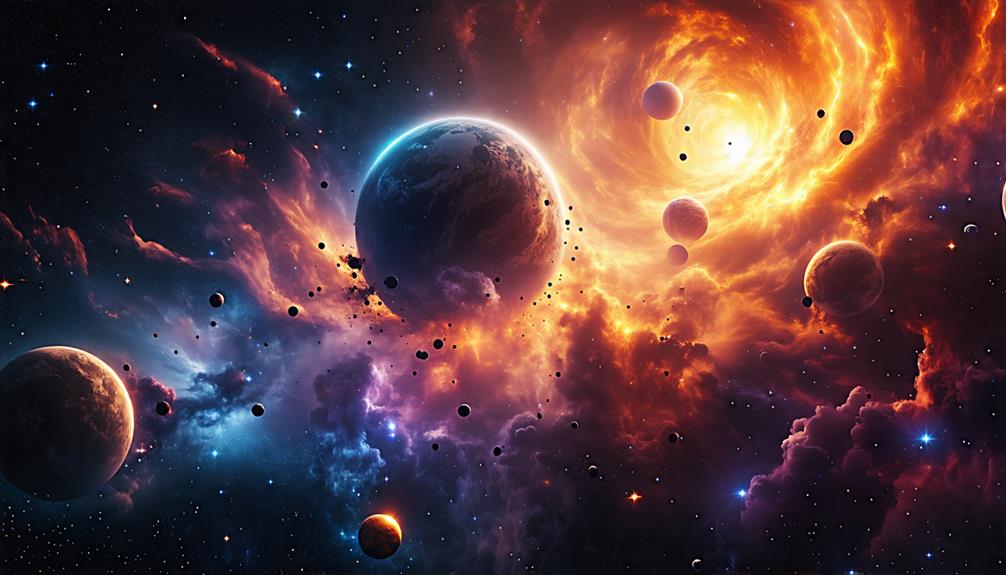
Understanding the formation and ejection of planets is crucial for grasping the origins of rogue planets. These free-floating worlds often arise through complex processes, involving a variety of pathways and mechanisms. Some rogue planets are expelled from their original orbits due to gravitational interactions with giant planets, while others form independently outside traditional star systems.
Key factors contributing to rogue planet formation include:
- Ejected planetary systems: Gravitational interactions with larger planets can expel planets from their orbits.
- Diverse origins: Some rogue planets form independently, highlighting a wide range of formation pathways.
- Estimated abundance: The Milky Way may host billions to trillions of rogue planets, potentially outnumbering stars.
- Core collapse theory: Recent research suggests the number of rogue planets is higher than previously thought, leading to new theoretical models.
Rogue planets offer intriguing insights into the complexity of our universe, particularly within the vastness of interstellar space.
Habitability Potential of Rogue Worlds

When assessing the habitability potential of rogue worlds, consider their unique atmospheric conditions and heat retention capabilities. Tidal heating mechanisms could create subsurface oceans, similar to some moons in our solar system. This combination suggests intriguing possibilities for life in environments that defy traditional definitions of habitability.
Unique Atmospheric Conditions
Free-floating worlds may harbor unique atmospheric conditions that enhance their potential for habitability, particularly through the presence of liquid water on their moons. Rogue planets, drifting without a parent star, could maintain hydrogen-rich atmospheres, which trap internal heat and create habitable environments. This internal heat could keep water in liquid form, even in the absence of sunlight.
Consider these intriguing possibilities for rogue planets:
- Hydrogen-rich atmospheres that retain heat, creating stable conditions.
- Subsurface oceans on moons, kept warm by internal heat and possible tidal heating.
- Presence of liquid water, crucial for life, on these moons.
- Diverse atmospheric conditions, fostering unique ecosystems.
The combination of these factors can lead to environments where life might thrive, demonstrating that even without a star, rogue planets can possess the necessary conditions for habitability. Exploring these worlds expands our understanding of life's potential beyond our solar system, opening the door to new possibilities in the universe.
Tidal Heating Mechanisms
Tidal heating mechanisms play a crucial role in enhancing the habitability potential of rogue planets and their moons. These processes occur when gravitational interactions with large moons generate internal heat, creating conditions favorable for life. Just as early Earth benefited from tidal heating due to its proximity to the Moon, moons of free-floating planets could experience similar effects.
Simulations indicate that a substantial percentage of rogue planets retain their moons, thereby increasing their habitability chances through tidal energy. This heating helps maintain a stable internal environment, which is essential for supporting potential life forms. Moreover, if rogue planets possess hydrogen-rich atmospheres, they can effectively trap heat, preventing it from escaping into space. This retention of warmth can lead to Earth-like conditions, making these free-floating worlds even more promising candidates for habitability.
The combination of tidal heating and unique atmospheric conditions creates potential environments where life could thrive. Therefore, understanding these tidal heating mechanisms is fundamental as we investigate the intriguing possibilities of rogue planets and their moons in the search for extraterrestrial life.
Potential for Subsurface Oceans
Many rogue planets could still harbor subsurface oceans due to internal heating mechanisms and the influence of potential moons. These free-floating worlds, adrift in the cosmos, might maintain liquid water beneath their icy surfaces, creating intriguing possibilities for habitability.
- Internal Heating: Radioactive decay within the planet's core can generate sufficient heat to warm its interior.
- Tidal Heating: The gravitational interaction with large moons could create frictional heat, contributing to the warming of the planet's interior.
- Hydrogen-Rich Atmospheres: Such atmospheres can effectively trap heat, aiding in the maintenance of liquid water beneath the surface.
- Historical Analogs: Early Earth experienced significant tidal heating due to its interaction with the Moon, suggesting similar mechanisms could operate on rogue planets.
The combination of these factors suggests that, even without the presence of a parent star, rogue planets are not necessarily barren. Instead, their unique conditions might allow subsurface oceans to exist, mirroring environments seen on some of our solar system's moons. As researchers continue to explore these free-floating worlds, the prospect of life on rogue planets remains an exciting area of scientific inquiry. The secrets of these distant oceans could provide profound insights into the potential for life beyond our solar system.
Moons of Free-Floating Planets
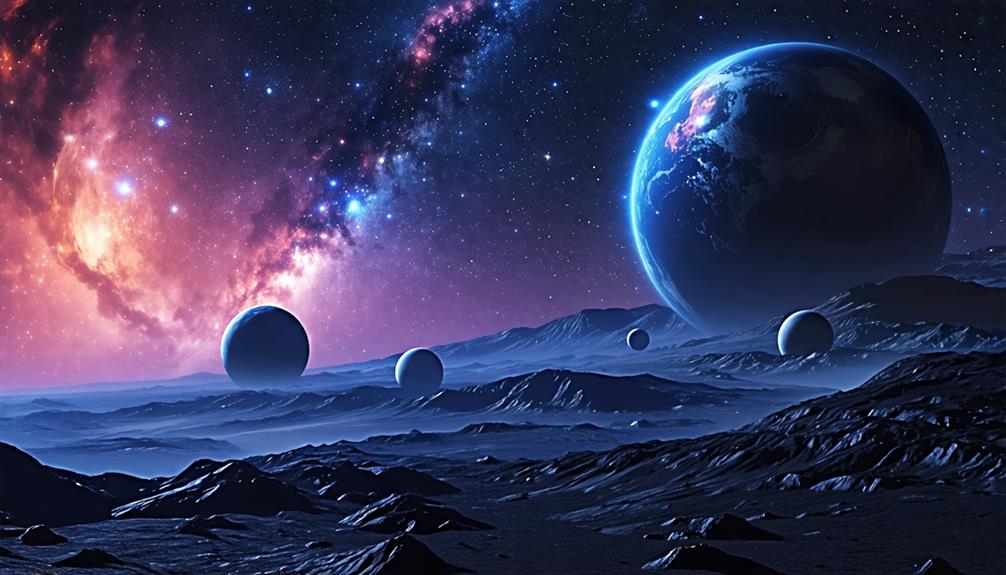
When considering moons of free-floating planets, it is essential to explore how they might form from surrounding gas and dust clouds. These moons could create unique environments through tidal heating, potentially supporting life beneath their icy surfaces. As scientists investigate these possibilities, the implications for astrobiology become increasingly intriguing.
Moons' Formation Possibilities
Free-floating planets, which wander through the cosmos without a host star, can form moons from the gas and dust clouds surrounding them, similar to how moons develop around stars. These rogue planets can retain these celestial companions, thereby enhancing their potential for habitability.
Key aspects to consider about moons of free-floating planets include:
- Formation: Moons can form from the primordial materials present during the rogue planet's creation.
- Retention: Simulations indicate that many rogue planets can retain their moons, increasing the system's complexity.
- Tidal Heating: Multiple moons could generate tidal heating effects, potentially sustaining subsurface oceans.
- Protective Icy Crusts: Icy moons may act as shields against cosmic radiation, fostering a more habitable environment.
Understanding the formation possibilities of moons around free-floating planets not only sheds light on their dynamics but also opens doors to examining their habitability. Continued exploration of these intriguing worlds may uncover more about the potential for life beyond our solar system.
Tidal Heating Effects
Tidal heating from moons orbiting rogue planets can create internal warmth, potentially sustaining subsurface oceans capable of supporting life. As these moons interact gravitationally with their parent rogue planets, they generate significant internal heat, similar to the tidal forces observed on Jupiter's moons, which play a crucial role in maintaining their habitability.
Interestingly, a substantial percentage of rogue planets can retain moons, enhancing their chances of supporting life through these tidal heating mechanisms. Historical evidence highlights how early Earth benefited from strong tidal heating from its closer Moon, showcasing the importance of tidal interactions in shaping planetary environments.
Furthermore, the presence of thick icy crusts on these moons can act as protective shields, guarding potential microorganisms from harmful radiation and impacts. This further promotes the habitability of these celestial bodies, making them intriguing targets for future exploration. As we delve deeper into the mysteries of rogue planets, understanding the effects of tidal heating on their moons could provide valuable insights into the potential for life in these free-floating worlds.
Astrobiological Implications
Moons orbiting rogue planets could offer valuable insights into astrobiological possibilities, as they may host conditions suitable for life. These free-floating worlds might retain moons that create environments rich in liquid water, enhancing the chances for life to thrive. Here's what makes these moons intriguing:
- Tidal Heating: Gravitational interactions can generate heat, potentially sustaining subsurface oceans.
- Organic Molecules: Similar to Jupiter's moons, these moons may harbor essential building blocks for life.
- Icy Crusts: Thick layers of ice can protect microorganisms from harmful radiation and impacts.
- Habitability Potential: Research indicates a significant number of rogue planets could have moons capable of supporting life.
As we investigate these rogue planets and their moons, we may uncover new habitats where life could exist, deepening our understanding of the universe and the conditions that foster existence beyond our solar system. The astrobiological implications of these free-floating worlds are just beginning to unfold.
Detection Challenges in Astronomy

Detecting rogue planets presents significant challenges due to their faintness and lack of illumination from a parent star. These free-floating worlds blend into the vastness of space without the brightness that typically aids in celestial observation. Traditional methods like direct imaging often fall short, requiring more advanced techniques to uncover their presence.
One effective method is gravitational microlensing, which relies on the bending of light from distant stars as a rogue planet passes in front of them. This technique has proven successful, as evidenced by the Microlensing Observations in Astrophysics (MOA) survey identifying 14 potential rogue planets. However, confirming their existence remains a challenge due to the complexities involved in estimating their mass based on brightness.
Distinguishing rogue planets from similar celestial bodies, such as brown dwarfs, adds another layer of difficulty to detection. Upcoming telescopes like the Nancy Grace Roman Space Telescope and the James Webb Space Telescope will improve detection capabilities. These advanced instruments will allow scientists to identify large satellites around these free-floating planets, shedding more light on their elusive nature.
Advances in Detection Technologies

Recent innovations in detection technologies are set to revolutionize our understanding of rogue planets, allowing astronomers to identify more of these elusive worlds. Tools like the Nancy Grace Roman Space Telescope and advancements in gravitational microlensing are expected to significantly increase the number of rogue planets discovered.
- Gravitational Microlensing: This technique detects low-mass, free-floating planets by measuring the bending of light from distant stars.
- Nancy Grace Roman Space Telescope: Its state-of-the-art capabilities will significantly enhance the search for rogue planets.
- MOA Survey: Over nine years, this survey identified 14 free-floating planet candidates using microlensing events, demonstrating the method's effectiveness.
- Next-Gen Telescopes: Instruments like the James Webb Space Telescope (JWST) and PLATO will improve the detection of large moons around free-floating planets.
Together, these advances in detection technologies promise to reveal new insights, making the universe's free-floating worlds less mysterious. Prepare for a deeper exploration into the cosmos!
Astrobiological Implications

Rogue planets may harbor unique environments capable of supporting life, particularly on their moons, where conditions could allow for the presence of liquid water. Research suggests that these free-floating worlds might outnumber stars in the Milky Way by a factor of 20, indicating a vast array of potential habitats for extraterrestrial life. An Earth-mass rogue planet could have the right conditions for habitability, especially if it possesses a stable atmosphere and internal heat sources.
The atmospheric composition of a rogue planet is crucial, as it can reveal fundamental elements necessary for life. Intense auroras, driven by unique atmospheric dynamics, might provide energy sources in the absence of stellar light, enhancing the potential for life. The upcoming Nancy Grace Roman Space Telescope will play a significant role in discovering more Earth-mass rogue planets, allowing scientists to study their characteristics and potential for supporting life. As we expand our understanding of these mysterious worlds, we might redefine what habitability means, pushing the boundaries of where we consider life could thrive in the universe.
Recent Discoveries and Surveys

Scientists have recently unveiled the discovery of at least 70 rogue planets in the Upper Scorpius stellar association, highlighting significant advancements in the detection of these mysterious free-floating worlds. This discovery is the result of extensive surveys led by Hervé Bouy and his team at the University of Bordeaux, who leveraged over 80,000 observations to identify candidates based on specific brightness, color, and motion characteristics.
Key highlights of these findings include:
- The Upper Scorpius stellar association is located approximately 420 light-years from Earth.
- Gravitational microlensing techniques from the Microlensing Observations in Astrophysics (MOA) survey have been crucial in detecting low-mass rogue planets.
- Estimates suggest that the Milky Way may contain trillions of rogue planets, potentially outnumbering stars by a factor of 20.
- The upcoming Nancy Grace Roman Space Telescope, scheduled for launch by May 2027, aims to enhance detection capabilities for Earth-mass rogue planets.
These advancements not only enhance our understanding of rogue planets but also imply a highly populated galactic landscape.
Future Exploration Missions
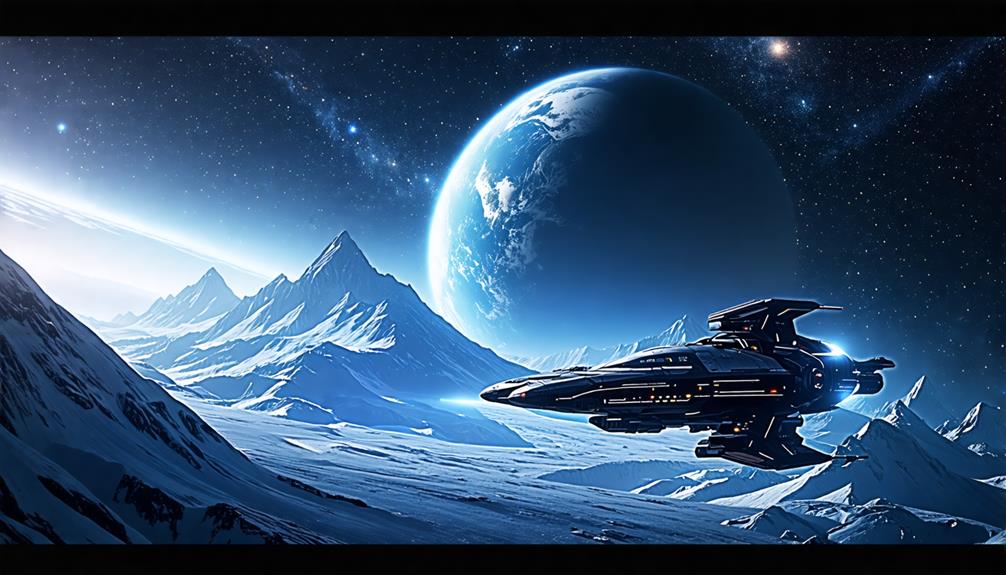
The upcoming Nancy Grace Roman Space Telescope is poised to play a pivotal role in the exploration of free-floating planets. Scheduled for launch by May 2027, this telescope is expected to detect approximately 400 Earth-mass rogue planets, enhancing our understanding of their atmospheres and potential for habitability.
| Key Features | Impact on Exploration Missions |
|---|---|
| Wide field of view | Enables identification of a greater number of rogue planets |
| Sharp imaging capabilities | Facilitates detailed atmospheric analysis |
| Collaboration with PRIME telescope | Enhances data accuracy and depth in research |
These future missions will focus on analyzing the atmospheres of these rogue planets, evaluating their potential habitability, and uncovering their unique environments. Complementary research, such as the Microlensing Observations in Astrophysics (MOA) survey, will augment these efforts, providing insights into rogue planet formation and dynamics. With its advanced detection methods, the Nancy Grace Roman Space Telescope will significantly refine theories regarding the population and characteristics of rogue planets, expanding our understanding of the galaxy.
Conclusion
Exploring rogue planets delves into a realm of intriguing possibilities, challenging our understanding of planetary formation and habitability. Advanced detection methods allow us to uncover their secrets and even consider the potential for life on their moons. As research progresses, the cosmos reveals more about these enigmatic planets, inviting us to imagine the hidden wonders that await in the vastness of space. Stay tuned; the adventure is just beginning!


